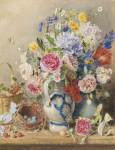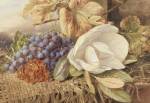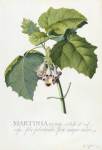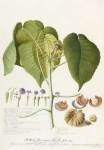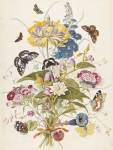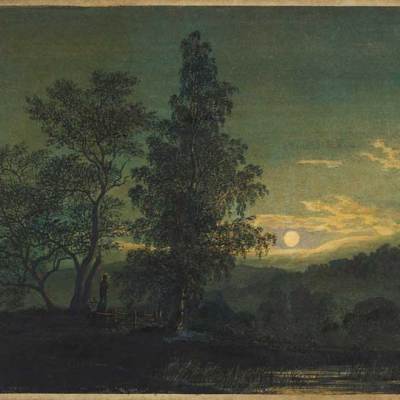Unfortunately-timed maintenance work meant I had to take a large detour to see the current display of flower watercolours in the Fitzwilliam Museum. If, however, you do happen to pass the Shiba Gallery, a glance into the display room might reveal a species of painting with which you’re unfamiliar.
Hura crepitans, L. (Euphorbiacae, Sandbox Tree) (1738), Georg Dionysius Ehret © Fitzwilliam Museum, Cambridge
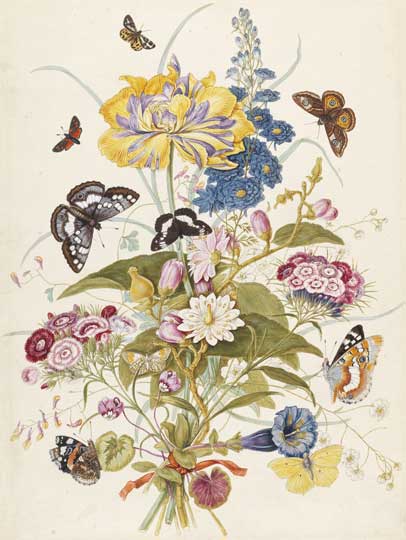
‘From Root to Tip: Botanical Art in Britain’ is in no way as comprehensive as the title implies. It’s a small gathering, but it hints how flower paintings might inhabit various genres. A typical title gets the point across: a 1769 work by Thomas Robins the Elder is called A bunch of ornamental flowers tied with a ribbon, surrounded by moths and butterflies. Here we have picking, polite arrangement and the suggestion of a gift – bordered by insects which may or may not be attracted to these flowers in nature.
The display situates flower paintings in new soil. These sharp compositions live in the Regency period and the mind of the botanist; they do not grow in the classical urns of 17th-century Dutch art (examples of which hang in the museum’s permanent ‘Flower’ gallery nearby). Plants in this exhibition are drawn conceits to be sent to Princess Elizabeth, daughter of George III, from the President of the Royal Society, Joseph Banks (1814). A banksia lies as a rebus below his signature. Or they are depicted by Christabel King at various stages of growth and budding, an insightfully naive pre-millennial celebration of life (1997).
It’s difficult to determine whether these paintings – all owned by the Fitzwilliam – are a peculiar offshoot of orthodox British flower painting, or whether they constitute a significant sub-species. A little taxonomy would be welcome. Then again, these obscure watercolours are in a class of their own.
‘From Root to Tip: Botanical Art in Britain’ is at the Fitzwilliam Museum until 11 May.



